SD › Seville › Best Things to Do
Updated: May 16, 2022
By Santorini Dave
See Also
Top 19 Things to Do in Seville
-
Visit the Seville Cathedral & Bell Tower
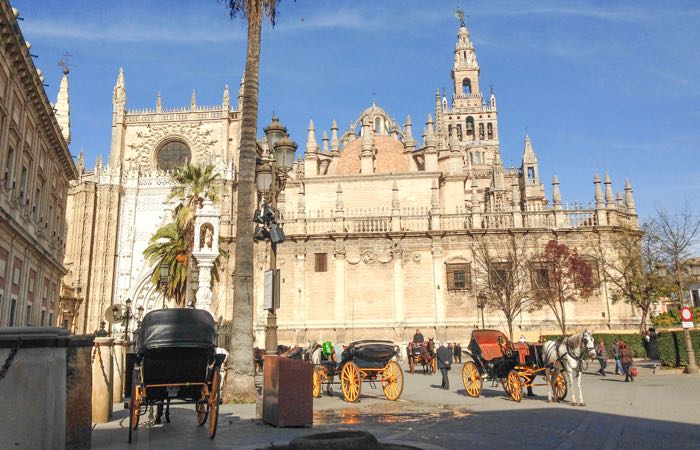
Seville’s most important church. Dominating the cathedral square, El Catedral de Sevilla is the largest Gothic church in the world and the third largest church in Europe after St Peter’s (the Vatican) and St Paul’s (London). Built on the ruins of a mosque, this 15th century church houses unmissable artistic features and historic artifacts. Its crowning glory is the grand altarpiece – the largest ever made – that depicts the life of Jesus of Nazareth, from birth to Crucifixion. Behind this is the choir with its immense pipe organ. (It’s worth attending 10am mass, Sunday through Friday, just to hear it played.) Also notable are the magnificent tomb of Christopher Columbus, artworks by Zurbarán and Murillo, a chapel housing the Virgen de la Antigua – a delicate 13th-century fresco, Ferdinand III’s pennant (flown by the Crusaders as they expelled the Moors from Seville in 1248), priceless jeweled pieces, and intricate Plateresque silverwork. Tickets include entry to the 330ft Torre Giralda bell tower that used to be the mosque’s minaret; the city views from the top are wonderful. Exit through the Court of the Orange Trees. -
Explore the Royal Alcázar
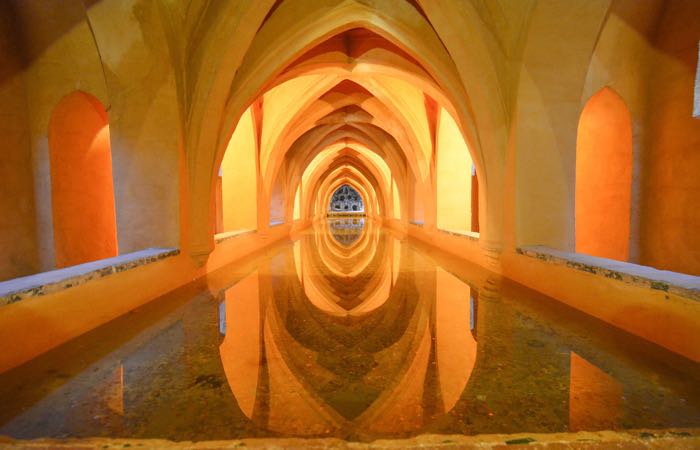
Seville’s beautiful royal palace, and the oldest palace in Europe that’s still in use. The home of Moorish rulers in the 10th century, this enormous palace and garden complex is a stunning mix of Islamic and Christian elements, and one of Seville’s biggest highlights. From the entrance, pass through the Courtyard of the Hunt to admire the Islamic tracery at the entrance of King Pedro I’s Palace, then take a right into the Admiral’s Hall, where Columbus would report back to Queen Isabel about his New World discoveries. Inside the Royal Palace, highlights include the beautiful Courtyard of the Maidens, the breathtaking Moorish dome in the Hall of Ambassadors (the king’s throne room), and the Mudejar arches and pool of the Courtyard of the Dolls. Pass through the Banquet Hall and Hall of Tapestries, and don’t miss the underground pool below the palace before exploring the vast palace gardens. To skip the queues at this UNESCO World Heritage Site, secure your visiting time slot online in advance; afternoons tend to be less busy. (To visit the sumptuous Upper Royal Apartments, still used by the King of Spain, you’ll need to book a separate tour.) -
Go Tapas bar hopping
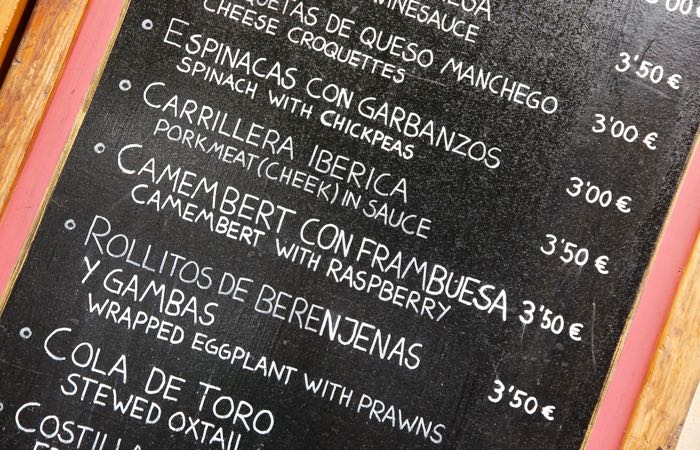
The best places to try traditional and gourmet tapas. With the exception of San Sebastian in Basque Country, no other part of Spain is as devoted to tapas as Andalucia. Seville has a tremendous variety of tapas bars, from old-school drinking joints with traditional dishes to the fusion and gourmet tapas bars that have sprung up in the last few years. Few places are as traditional as El Rinconcillo, which dates back to 1670 and serves homestyle dishes such as salmorejo (thick, savoury gazpacho), 7 kinds of tortilla (potato omelette), and steamed clams. La Brunilda Tapas serves a good range of traditional tapas, along with some creative standout options, such as codfish fritters with pear alioli. The old-school Vineria San Telmo does a particularly good fried octopus. The 19th-century Casa Ricardo offers ración plates to share; there’s no menu, but there are typical Andalucian dishes such as solomillo al whisky (pork loin in whisky sauce). Bodeguita Romero has been run by the same family for generations and their specialities include the smoked sardine montadito (open sandwich) with mojo verde (spicy green sauce) and the pringá (slow cooked meat and chorizo stew) sandwich. -
Visit the Museo de Bellas Artes
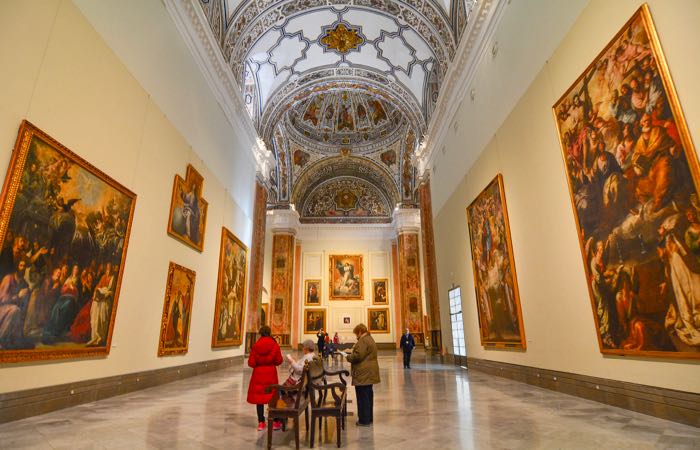
Excellent fine arts museum. This 20-room museum, beautifully housed in a former convent, features mainly Spanish art from the medieval period to the beginning of the 20th century. While there are a few works by the likes of Goya, Velázquez, and El Greco, the permanent collection is particularly strong on Spanish Masters from the 17th century – the Golden Age of Sevillian painting: Murillo, Zurbarán and Valdés Leal. Highlights include the Immaculate Conception paintings by Murillo (his Virgin Mary radiates warmth and innocence, unlike the gritty realism of his contemporaries) and the Apotheosis of St. Thomas Aquinas, believed to be Zurbarán’s pivotal work – both found in Room 5. Room 8 features the paintings of Juan de Valdés Leal, with his dramatic, brooding Ascension of the Virgin and The Whipping of Saint Jerome being standout pieces. Other works to look out for include The Martyrdom of Saint Andrew by Juan de las Roelas and Our Lady of Sorrows by Murillo. Rooms 12-20 showcase Spanish contributions to Impressionism, Romanticism and other post-18th-century European trends. -
Attend a Flamenco show
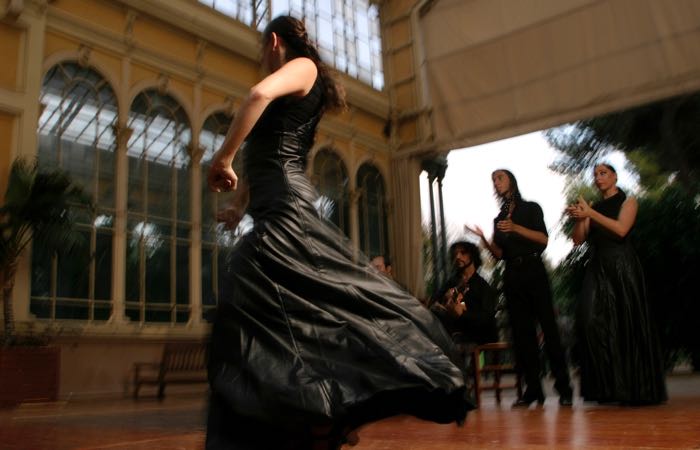
Don’t leave Seville without seeing witnessing flamenco, Andalucia’s powerful dance form. Rooted in Roma (gypsy) and Moorish culture, and combining sounds from the Levant and North Africa with Spanish folklore, flamenco became popular in Western Andalucia in the late 18th century. During flamenco’s Golden Age (1860s-1910) Seville produced some of flamenco’s finest dancers and the city remains one of the best places in Spain to catch a performance. Flamenco is improvisation; intricate rhythms produced by clapping and castanets, sensual sung laments accompanied by guitar, and the staccato stomping and graceful turns of the dancers. There are three types of flamenco shows in Seville: impromptu performances in bars, serious flamenco concerts, and touristy flamenco shows that come with dinner and drinks. Seville’s working class neighborhood of Triana used to be a hotbed of flamenco, and it’s still possible to come across spontaneous flamenco singing in some of its bars late at night. (Rejoneo and Lo Nuestro at Calle Betis 31B and A are a good bet.) La Casa Del Flamenco, La Casa de la Memoria and the Flamenco Dance Museum all hold comparatively priced (around 20 Euros), twice-nightly flamenco performances that are excellent introductions to the genre. Touristy flamenco shows tend to be pricey (around 75 Euros, including dinner) with an atmosphere that’s rather stale, but if you have your heart set on dinner and a show, Tablao El Arenal has very good dancing. -
Watch the processions during Semana Santa
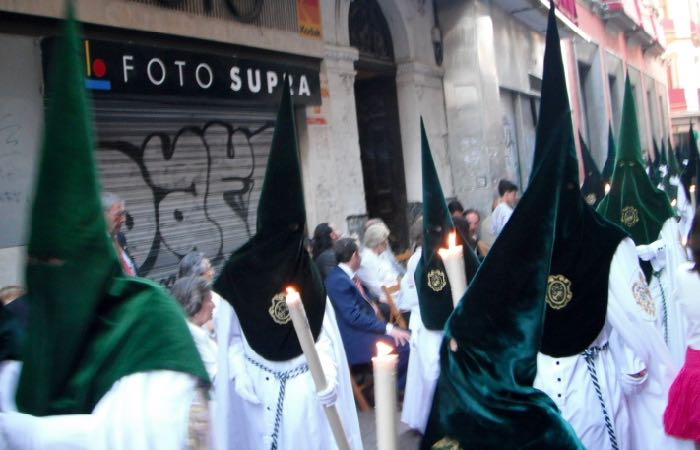
Colorful floats and eerie processions. The week leading up to the Easter weekend is celebrated with exuberance all over Spain, but the processions are particularly spectacular in Seville. Every day, thousands of people take to the streets to watch the enormous, elaborately decorated pasos (floats) carried by teams of costaleros, followed by altar boys trailing scented smoke from incense burners. Behind them walk hundreds of penitents, dressed in long robes and conical hoods, usually carrying candles or rough-hewn wooden crosses. Many walk barefoot. The floats depict scenes from Jesus’s life, many of them being works of art that date back to the 17th century. The best way to enjoy the processions is to join the crowds lining the routes. Procession routes change every year, and it’s a good idea to find out exactly where the procession routes are, since the whole thing last for many hours and many streets can be roped off. (There’s an app for that.) Enterprising parade-goers take collapsible chairs with them; the official seats are reserved for important members of the public and cost hundreds of Euros. If you’re lucky, you may get to watch the whole spectacle from the balconies above the street! -
Visit Barrio Santa Cruz
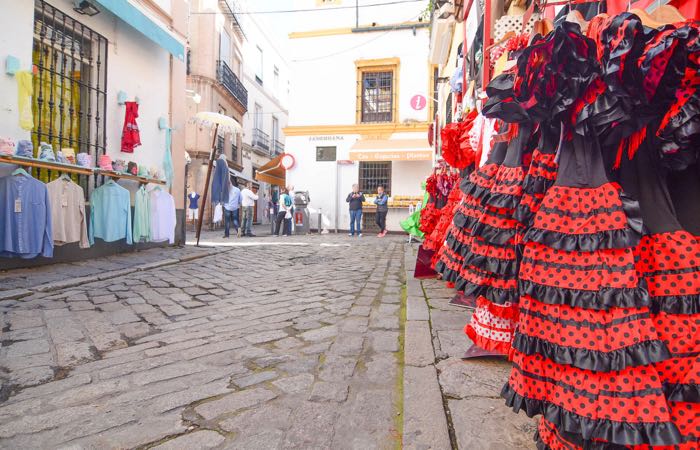
Seville’s former Jewish quarter. The tangled maze of narrow streets, lanes so narrow that you can touch both walls with your hands, tiny plazas dotted with orange trees and whitewashed houses is the medieval heart of Seville. Before the expulsion of Jews from Spain in 1492, Barrio Santa Cruz was the bustling Jewish quarter, though few signs remain of the vanished community. The small Centro de Interpretación de Judería on Calle Ximénes de Enciso has a few displays on Sephardic Jewish culture and offers maps of the neighborhood indicating formerly Jewish sites. The best way to explore Barrio Santa Cruz is just by getting lost in the streets, kept cool during summer heat by their narrowness and shade. Reasonably-priced walking tours are also offered, for those who are looking to learn the area’s history from those in the know. -
Attend a bull fight

Spain’s most controversial art form. While bullfighting has declined in popularity in some parts of Spain, in Andalucia in particular it has remained a venerable part of Spanish culture, and there are very few places where the sport is taken as seriously as in Seville. The 14,000-seat Maestranza – one of the oldest (1761) and most prestigious bullrings in the country – holds bullfights at Easter, on Sundays in May and June, and at the end of September. The Corrida de Toros, featuring big-name matadors, sells out days in advance; tickets range from around 30 Euros at the sunny back of the arena to around 180 Euros for a seat in the first three rows in the shade. After the opening parade of matadors, the bull is released into the arena, and the action plays out in three parts. First, the matador attracts the bull by waving his cape and lets the bull pass as close to him as possible several times. Next, the picadors and the banderilleros enter, spearing the bull in the back of the neck to weaken him, and distracting and enrage the bull by plunging two sharp, barbed sticks into its shoulders. In the final section, the matador faces the bull armed with a sword. After a series of elegant passes, he attempts to kill the bull with a single stab between the shoulder blades and through the heart. A particularly brave and elegant performance earns the matador an ear of the bull; an exceptional one earns two. Rarely, if a bull had fought particularly bravely, its life is spared. -
Visit the Hospital de la Caridad
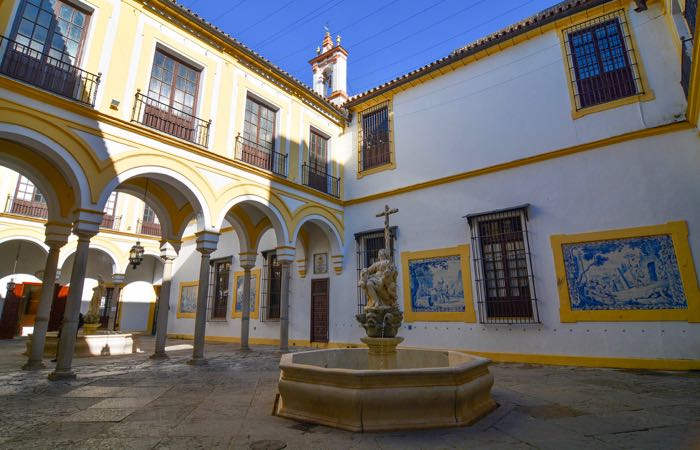
Historic hospital for the poor. Still a working charity, this striking building was founded as a hospice for the poor by the nobleman Don Miguel de Mañara. He had a reputation as a playboy and ne’er-do-well, and is rumored to have inspired the legendary Don Juan character before a vision changed his life and he devoted it to worship and charity work. Inside these converted 17th century warehouses are Tuscan columns, beautiful Delft tile-work from the Netherlands, marble fountain sculptures from Genoa, and Mañara’s former workspace, the Sala de Cabildos. The highlight of the hospital is the Baroque chapel, built by Mañara, decorated with paintings by Murillo and Valdés Leal. Don’t forget to step on Mañara’s tombstone (marked “the worst man in the world”) on the way out. -
Climb up the Torre del Oro
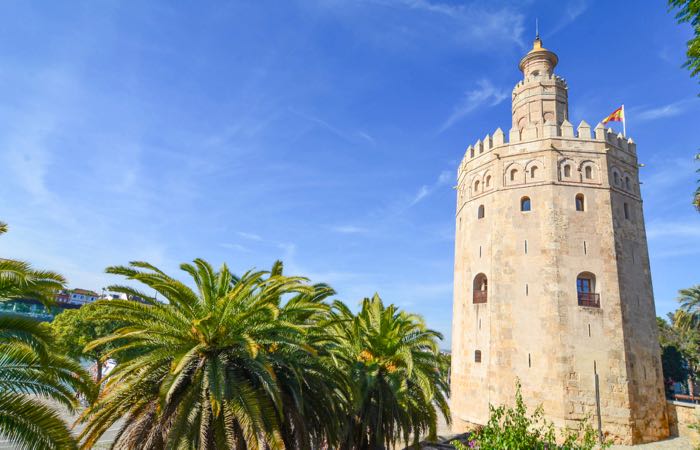
Historic tower with naval museum inside. Overlooking the Guadalaquivir River near the San Telmo bridge, the 12-sided Torre del Oro is a 13th century military tower. It was erected by the Almohad Caliphate as part of the city’s fortification, and also marked the starting and ending point for all the shipping to the New World. Inside the tower there’s a naval museum with scale models of all three of Columbus’s ships, a mural showing the voyages of Vasco de Gama, and artifacts such as 16th century prints of Seville, early diving gear, antique naval maps, cannon and other weaponry, and portraits of illustrious Spanish naval figures. You can climb all the way to the top of the tower for excellent views of the city and the river. River cruises depart from next to the tower. -
Visit the Plaza de Toros & Museo Taurino
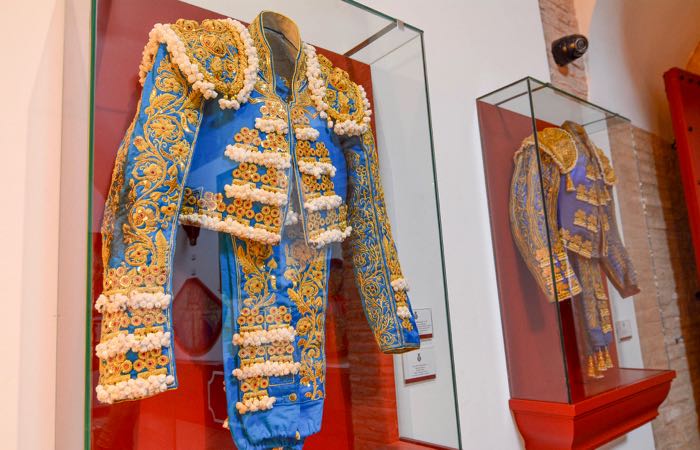
Bullring and museum of bullfighting. Seville’s venerable old bullring is home to the excellent museum dedicated to bullfighting. Even if you don’t attend a bullfight, you can visit the bullring as part of a combination bullring/museum tour. Tours in Spanish and English typically last about 40 minutes and depart every half hour. Visitors see the Hall of Prints – the former infirmary – which houses etchings, lithographs, prints and engravings of bulls and bullfighting (including some by Goya). The four adjoining vaulted halls next to the arena display 18th and 19th-century oil paintings, as well as posters and bullfighting paraphernalia. Among the most striking exhibits are the mounted bulls’ heads, including the famous Islero, who gored to death Manuel Rodríguez Manolete in 1947. Nearby are the trajes de luz (suits of light) worn by legendary matadors José Gómez Ortega “Gallito” and Juan Belmonte, and others. Tours stop by the chapel where matadors pray before the corrida, before continuing out onto the sand of the arena where the action takes place. -
Explore the Museo Palacio de la Condesa de Lebrija
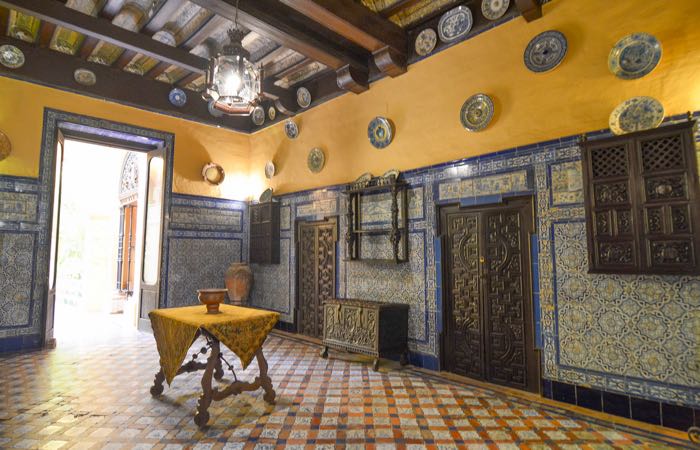
One of the most remarkable private houses in Seville, this stunning 16th century mansion of the Countess of Lebrija was opened to the public as a museum by her descendants in 1999. The countess was renowned for her collection of antiquities; the majority of the rooms on the ground floor are lined with Phoenican, Roman, Greek and Moorish artifacts, and almost the whole of the ground floor is paved with Roman mosaics. Notable artwork include the impressive mosaic in Sala Medusa, and the statue centerpiece of Sala Hermes. The light-filled 19th century conservatory is beautiful, and the Comedor Azul dining room is decorated with the most impressive tile-work in the entire mansion. Head upstairs to see an intimate glimpse into how the other half lived, second-floor rooms have been left unchanged since the Countess’ death in 1938; access to her private quarters is by guided tour only. -
Attend the Feria de Abril
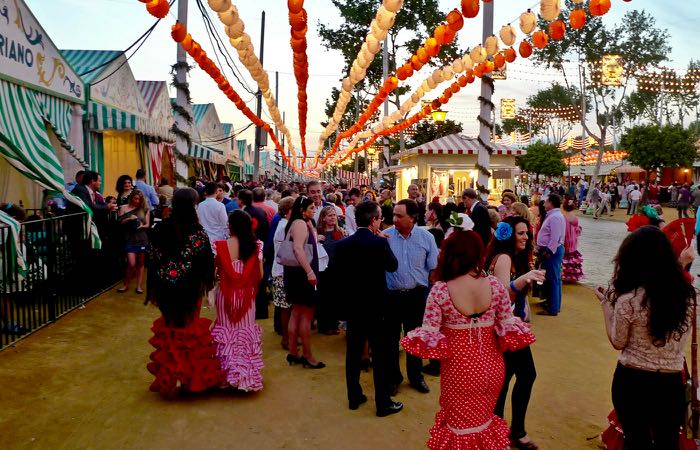
A raucous celebration of Andalucian culture, held two weeks after Easter. Located on the fairgrounds on the far side of the river, The Seville April Fair runs for six days, kicking off at midnight on Monday, when the fairground entrance lights are turned on. The Fair celebrates Andalucia’s passion for sherry, fine horses and flamenco, and every day there is an endless parade of carriages and riders that lasts until the evening, with locals partying around the clock. Originally a livestock fair in 1847, the Fair has become an excuse to dress up to the nines, and many women still dress up in outlandish trajes de flamenca (flamenco-style dresses), while the men are likely to wear regular suits. Fairground lanes are lined with casetas, private party tents hired by families and organizations, with a few sponsored by the city and open to everyone. The private tents have bouncers, but a friendly atmosphere prevails, and by striking up a conversation with partygoers outside the tents, it’s easy to get invited inside to join the fun, fueled by sherry spritzers. -
Explore the Plaza de Encarnacion
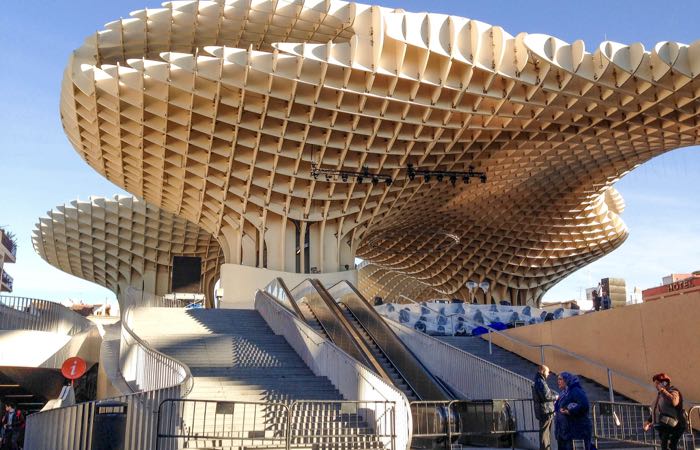
Giant wooden mushrooms. Revamped in 2011, the Plaza de la Encarnación features a striking construction called Metropol Parasol. It consists of a rippling, latticed wooden canopy resembling five hundred-foot-tall mushrooms, designed by German architect Jürgen Mayer. There’s a traditional market hall beneath, and a ramp leads down to a set of glassed-over, street level Roman ruins. Roman artifacts unearthed during the building of Metropol Parasol are displayed in a small museum here. You can take an elevator up from the museum level (separate entry fee) to the top of the ‘mushrooms’, where a walkway weaves its way up and down the ‘mushroom’ tops. There are excellent 360-degree views from Seville from the top. -
Enjoy contemporary art at the Centro Andaluz de Arte Contemporánio
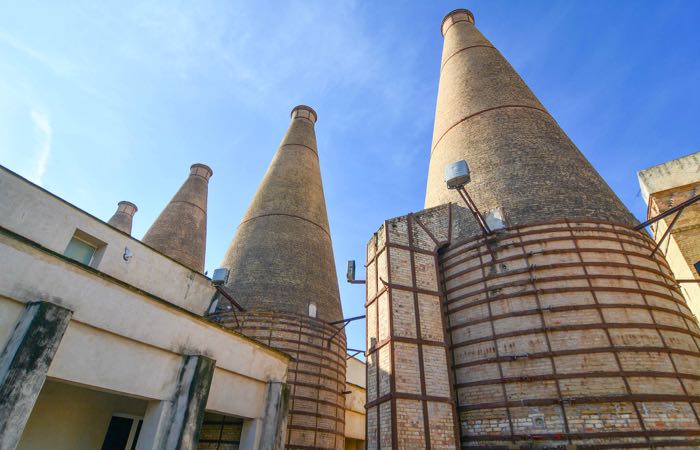
Housed inside a former monastery in Triana, Centro Andaluz de Arte Contemporánio (CAAC) showcases cutting-edge contemporary art exhibitions. The centre holds several changing exhibitions per year and showcases photography, sculpture, paintings and installations primarily by Andalucian artists, exploring the relationship between Andalucian creativity and national art movements. The permanent collection includes large-scale sculpture and installation art by French-American artist Louise Bourgeois, Pop and abstract art by Seville-born Louis Gordillo, sculpture and paintings by Pablo Palazuelo, and film, sculpture, and installation art by German artist Rebecca Horn. Apart from visiting the latest art exhibitions, visitors may wander through the old monastery grounds and have a look at the chapels, cloisters, priory cell, church, and the gardens. -
Visit the Museo de Baile Flamenco
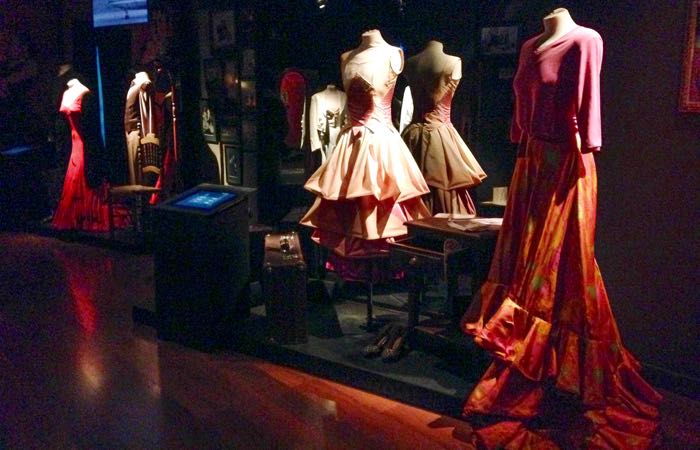
The first flamenco museum in the world. Created by the renowned Sevillian flamenco dancer Cristina Hoyos, this museum is a very worthwhile stop for those looking to learn more about the passionate dance that’s synonymous with Andalucia. Exhibits are spread over three floors of an 18th century mansion. On the ground floor there’s a teaching area where flamenco workshops are held and a small stage where nightly flamenco performances take place. The first floor blends traditional museum display with 21st century technology; there’s a high-tech screening room that shows the evolution of flamenco as a dance form and video performances of contemporary flamenco trends, while the dressing room houses flamenco costumes, fans, shawls, and other artifacts. On the second floor, find flamenco-themed sketches and paintings by the dancer Vicente Escudero. The excellent gift shop stocks flamenco CDs, DVDs, posters, shoes, and a wide range of books. -
Visit the Archivo General de las Indias
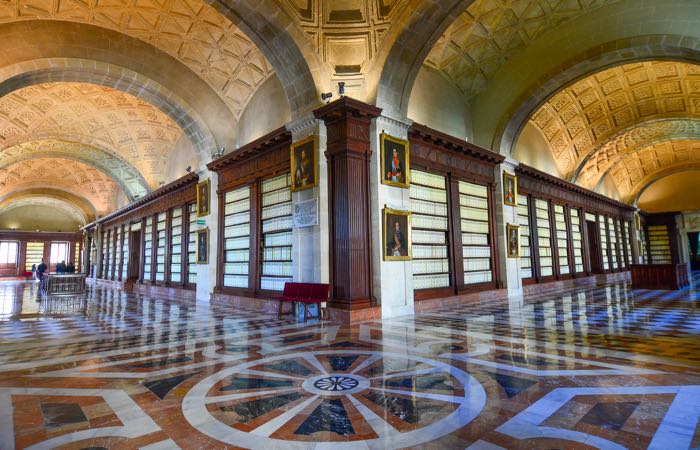
Stunning archive of the Spanish Empire. Housed inside a 16th century former merchants’ exchange across the street from the Alcázar, the General Archive of the Indies houses hugely valuable historical documents that illustrate the conquest of the New World. Special permission is needed to access its 43,000 documents, which include the diary of Christopher Columbus and plans of colonial South American cities, but the building is as much of a draw as its contents. Head up the grand marble staircase to three vaulted galleries on the first floor, where a handful of rotating documents and artifacts are displayed at any given time. A separate viewing room screens a 15-minute video on Seville, the major role the city had played in the Spanish Empire, and the city’s New World connections. Entrance to the archive is free, and generally line-free. -
Go to an art exhibition at the Hospital de los Venerables
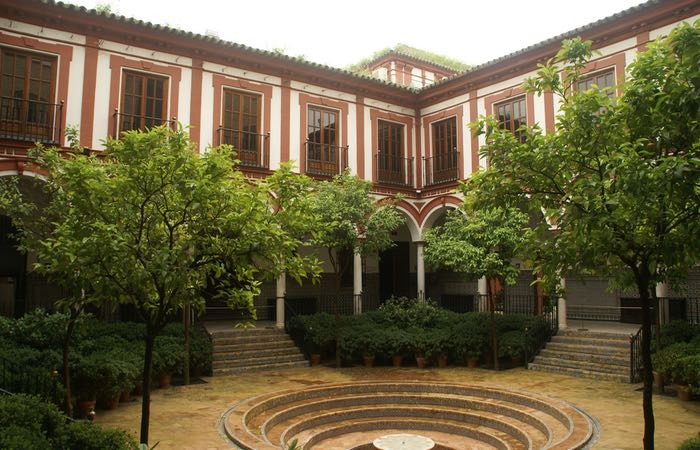
Charity hospital turned art gallery. In the heart of Barrio Santa Cruz, this Baroque 1697 building was originally built by the Brotherhood of Silence to take care of the destitute and the needy, as well as elderly priests. The former hospital has a beautiful stepped fountain and is surrounded by Tuscan arches. The main building includes the Centro Velásquez, a painting gallery dedicated to one of Spain’s greatest painters and one of Seville’s most famous sons. A number of Velásquez’ early works depict 17th-century Seville – in many of his paintings, landmarks such as the Torre de Oro, the Giralda and the bridge to Triana are easily recognizable and are largely unchanged to this day. Notable works by other artists include The Penitent St Peter by Murillo and Friar Peter of Oña by Zurbarán. The Baroque church, attached to the hospital, is well worth a look for the trompe l’oeil and the frescoes by Valdés Leal.
photo credit -
Take the kids to Isla Magica
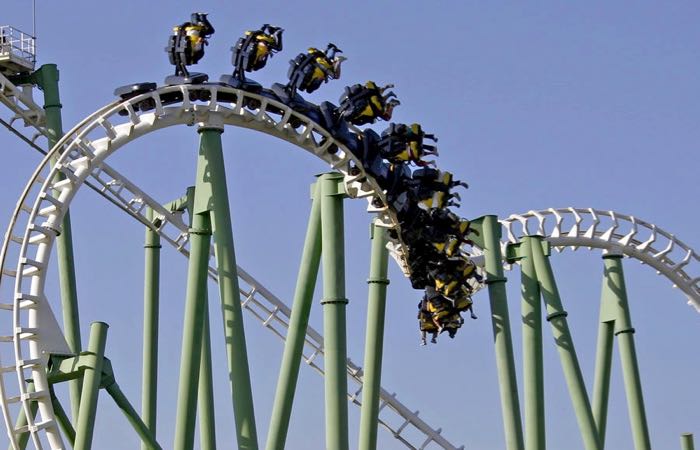
This theme park, popular with families, is built on the site of the 1992 World Expo, north-west of the Seville city center. Based on a 16th-century Spanish Colonial theme, the park is divided into six areas.Agua Mágica is a watery world with water slides, a lazy river, beach, paddling pools and a relaxation area with hammocks. The other five areas feature rides; La Fuente de la Juventud is the area designed with younger children in mind, with a merry-go-round, mini-Ferris wheel and family Big Dipper. There are several adrenalin-packed rides as well: the Anaconda flume ride in Puerta de América, the El Jaguar rollercoaster in Amazonia, with high-speed 360-degree, corkscrew turns, and The Challenge in Puerto de Indias, a freefall tower that lifts you up high above the city before dropping you 68m in less than 2 seconds. Rides aside, there’s a nighttime multimedia lake show, puppet theater aimed at younger kids, a battle reconstruction, various games, and several family-friendly restaurants.
About Santorini Dave